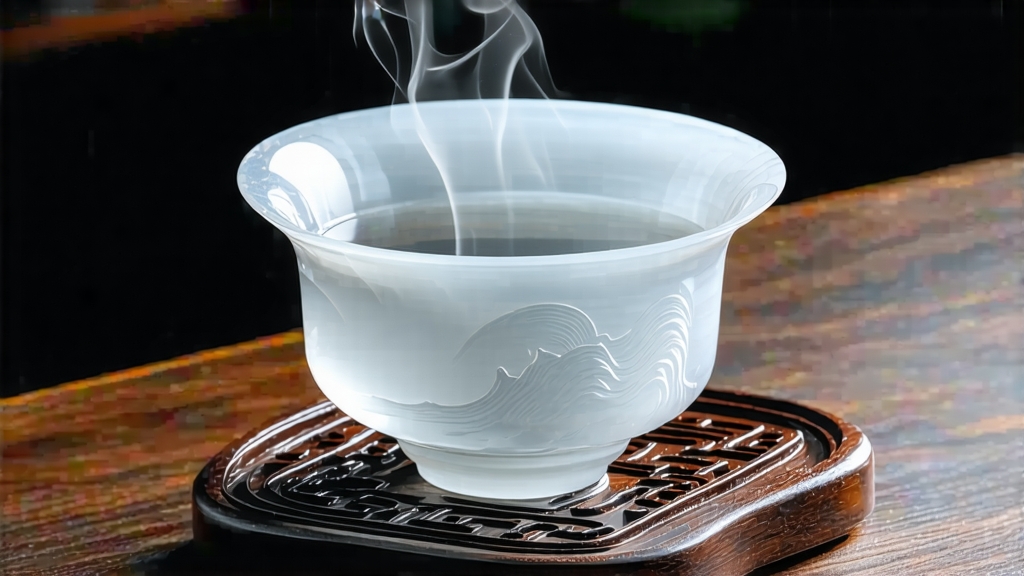
Tucked high on the forested ridges of southern Yunnan, where the Tropic of Cancer brushes the clouds, a tea has been quietly absorbing moonlight for more than three centuries. Locals call it Yue Guang Bai—literally “Moonlight White”—yet the name is only half a translation; the other half is the taste of altitude, monsoon, and centuries-old tea-tree genetics. Unlike the better-known Fujian white teas that dominate Western catalogues, Yue Guang Bai is born from the same ancient Assamica stock that gives the world pu-erh. Its buds are stout, downy, and sometimes the length of a little finger; its leaves are leathery, forest-green on one side, moon-silver on the other. When handled with restraint, they yield a liquor that smells of midnight orchards and finishes with the cool sweetness of alpine honey.
The story begins in Jinggu Dai and Yi Autonomous County, west of the Lancang River. Oral chronicles kept by Bulang and Dai elders say that during the early Qing dynasty a caravan of tea mules was delayed by landslides. To keep the pickings from spoiling, the drivers spread the leaves on bamboo mats under a full August moon. The next dawn the buds had lost their grassy edge and taken on a faint hay-lilac perfume. The tea was sold at the next market as “moon-cured” and fetched twice the usual price. Whether myth or marketing, the technique stuck: pick at night, wither under moonlight, shade-dry at dawn, finish in low-temperature ovens. Today the process is more deliberate, but the nocturnal romance remains the signature of the style.
Botanically, Yue Guang Bai is not a single cultivar but a seasonal expression of Yunnan’s “big-leaf” tea trees—often centuries old, sometimes wild, sometimes half-domesticated. The most prized material comes from the first flush of March, when the nights are still cool and the buds wear a thick coat of silver trichomes. Standard grades are built around two plucking protocols: “one bud” (gong mei style) for delicacy, and “one bud one leaf” (shou mei style) for depth. A third, rarer grade called “needle and moon” is harvested only on the three nights preceding the Qingming festival; it contains unopened buds still curved like tiny scimitars and a single fish-scale leaf that has not yet unfurled. These lots are never blended; each bamboo basket is tagged with the name of the picker and the phase of the moon.
Crafting Yue Guang Bai is a dialogue between patience and climate. Picking starts after eight p.m., when leaf temperature drops and surface moisture condenses. The buds are laid no thicker than two fingers on perforated bamboo trays set on mountain-side terraces open to the sky. For the next eight hours they are turned every thirty minutes so that each side inhales the cool, ozone-rich air. Just before sunrise the trays are moved into pine-shaded lofts where the temperature hovers around 22 °C and humidity stays above 70 %. Here the leaves rest for another twenty-four hours, entering a slow enzymatic phase that converts catechins into softer flavonoids and releases a signature apricot-peel aroma. The final step is a forty-minute “warm slumber” at 38 °C—just enough to fix the fragrance without roasting. No rolling, no pan-firing, no charcoal finish; the goal is to let the leaf keep its lunar imprint.
Because the tea is only lightly oxidised (8–12 %), it continues to evolve in storage. A cake pressed in 2015 will darken from moon-silver to antique brass, while the cup moves from lily-honey to dried longan and finally to a resinous camphor note reminiscent of aged raw pu-erh. This ageing potential has attracted a small circle of collectors who store the tea in Yunnan’s natural “dry cellars”—clay-walled rooms where diurnal temperature swings mimic the original withering conditions.
To brew Yue Guang Bai well, one must respect its dual personality: it is both sturdy Assamica and delicate white tea. Start with neutral water, 80–85 ppm TDS, brought to 85 °C.